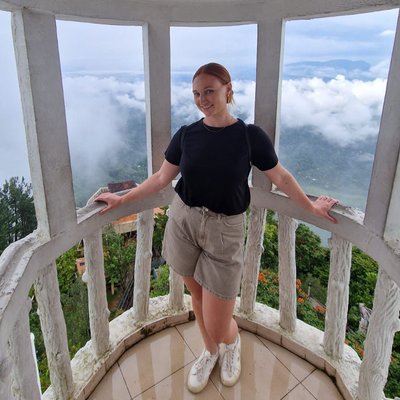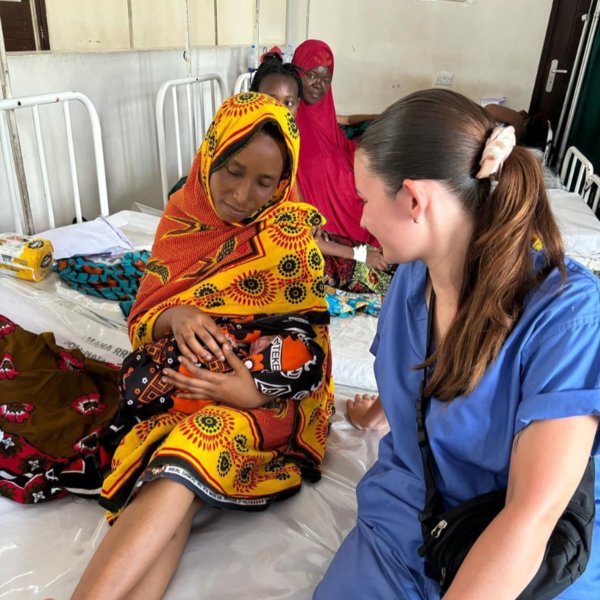University of Wolverhampton 2018
 As a third year student midwife at the end of my training, I wanted to finish my course on a high.
As a third year student midwife at the end of my training, I wanted to finish my course on a high.
I took time choosing somewhere I knew would help my confidence grow in not only my practice, but also in myself.
I chose Iloilo in the Philippines, for a two week placement working in maternity.
I was aware that many hospitals in the Philippines didn’t have access to the same resources or equipment available in UK hospitals.
So, prior to my trip, I wanted to do some fundraising to buy for the hospitals supplies they were seriously lacking.
Work the World advised me to buy the supplies I wanted to donate once in the Philippines. Doing so would support the local pharmacy, and it meant I could buy items that hospital staff said were low in stock at that moment in time.
When I arrived, staff told me the hospital was most in need of hand sanitiser, plasters, soap and syringes. These seemed to me to be such basic supplies. We wouldn’t see a UK hospital without them.
 We bought the supplies, and when we handed them over the nurse in charge was most happy about the hand sanitiser. It had been out of stock for a while.
We bought the supplies, and when we handed them over the nurse in charge was most happy about the hand sanitiser. It had been out of stock for a while.
“Yay, alcohol!”, she sang — a phrase many UK midwives are already familiar with, although it more often refers to gin in our case.
In the Philippines, if a woman enters the delivery room pushing, the local midwives tell them not to. They then apply pressure to the presenting part, to prevent the baby’s descent if the doctor is not ready to deliver.
They are then expected to push on demand and, given an IV of oxytocin to encourage contractions. If a woman does not push, the doctor applies fundal pressure.
One woman was a lay in lithotomy and the doctor was kneeling with his knees by her head, exerting his weight onto the woman’s abdomen to apply fundal pressure as a second doctor delivered the baby.
They performed four cuts to complete the episiotomy and the baby was born.
 The whole process took 12 minutes, including the placenta and being sutured. The woman was then sat in a wheelchair ready to be taken to the postnatal room.
The whole process took 12 minutes, including the placenta and being sutured. The woman was then sat in a wheelchair ready to be taken to the postnatal room.
Birth partners aren’t allowed in neither the delivery room in the Philippines, nor the new-born observation room. This is where the babies were taken immediately following delivery for an hour or longer.
Following the delivery above, I took the baby to the observation room. When we arrived, the baby’s dad was peering through the glass, eager to catch a glimpse.
I noticed, and so lifted up his baby so he could see. He gave his newborn son that familiar ‘proud dad’ look you often see at deliveries.
He mouthed ‘thank you’ to me and I stole a cuddle with baby.
 There were times where the placement was emotionally challenging. For example, there was a high volume of babies with fetal abnormalities.
There were times where the placement was emotionally challenging. For example, there was a high volume of babies with fetal abnormalities.
Local staff told me that fetal abnormalities were common at their hospital, as most high risk women were referred there.
Seeing real life cases of anencephaly, hydrocephalus and exomphalos was difficult. But it was also fascinating, as these were all conditions I’d only read about.
Fortunately, staff and other students in the Work the World house made it easy to discuss and debrief on what we’d seen or done that day.
Developing an understanding of other cultures is something I’m passionate about. So I also wrote a blog about my time in the Philippines, which other midwives and friends could read.
Writing helped me as it allowed me time each day to sit and debrief myself.
 Another great way to decompress from the week is to take weekend trips around the Philippines!
Another great way to decompress from the week is to take weekend trips around the Philippines!
In my two weeks I travelled to Cebu and Antique.
We swam with whale sharks at sunrise in Cebu. We went canyoneering through waterfalls too, and enjoyed traditional Filipino food along with some cocktails.
In Antique, we went on a whistle-stop motorcycle tour to see some of the most beautiful scenery the Philippines has to offer.
We also went extreme water tubing, trekked to and swam in waterfalls, and relaxed in hot baths at the river’s edge.
The locals are welcoming and often want to have selfies taken with you, asking lots of questions about life in England. I embraced my five minutes of fame.
Each and every person who works for Work the World offered incredible support.
 From the team in the UK who organised my placement, to the team in the Work the World house in the Philippines, everyone was kind and extremely helpful. I always felt safe.
From the team in the UK who organised my placement, to the team in the Work the World house in the Philippines, everyone was kind and extremely helpful. I always felt safe.
I have already recommended this programme to many colleagues, and will continue to do so.
I massively developed both personally and professionally by participating in a Work the World placement. I only wish I had been there longer than two weeks.
Good luck on your own adventure, you won’t regret it!








